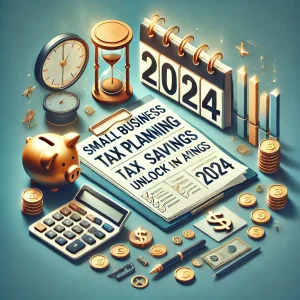As a small business owner, you’re all too familiar with the challenges of keeping your finances in order while trying to grow your business. But what if I told you that by implementing the right tax planning strategies, you could save thousands of dollars each year?
Small business tax planning: In 2024, there are 15 expert tips that every small business owner should know to maximize their tax savings. From home office deductions to hiring family members, these strategies can help you keep more of your hard-earned money in your pocket.
So, whether you’re a sole proprietor, partnership, or corporation, get ready to take notes. By the end of this article, you’ll have a clear roadmap for navigating the complex world of small business taxation and unlocking significant savings in the process.
Top 10 Small Business Tax Deductions to Maximize Your Savings in 2024
As a small business owner, it’s crucial to take advantage of every available tax deduction to minimize your tax liability and keep more of your hard-earned money. In this section, we’ll explore the top 10 small business tax deductions you should be aware of in 2024.
Home Office Deduction
If you use a portion of your home exclusively for business purposes, you may be eligible to claim the home office deduction. This deduction allows you to write off a percentage of your home expenses, such as rent, mortgage interest, utilities, and property taxes, based on the square footage of your home office.
Vehicle Expenses
If you use your vehicle for business purposes, you can deduct a portion of your vehicle expenses, such as gas, maintenance, and depreciation. There are two methods for claiming vehicle expenses:
-
Standard Mileage Rate: Multiply your business miles by the standard mileage rate set by the IRS (58.5 cents per mile in 2024).
-
Actual Expense Method: Track all vehicle-related expenses and deduct the business portion based on the percentage of miles driven for business purposes.
It’s crucial to keep a detailed log of your business miles, including the date, purpose, and destination of each trip. If you opt for the actual expense method, maintain receipts for all vehicle-related expenses.
Business Travel Expenses
When you travel for business, you can deduct a wide range of expenses, including:
-
Transportation (airfare, train tickets, rental cars, etc.)
-
Lodging
-
Meals (subject to a 50% limitation)
-
Incidental expenses (tips, parking fees, etc.)
To qualify as a business trip, your travel must be primarily for business purposes and take you away from your tax home (the city or area where your main place of business is located) for a period longer than an ordinary day’s work. Some of the best business travel agencies can help you manage your taxes and make sure that all applicable laws and regulations are adopted.
Depreciation
Depreciation allows you to deduct the cost of business assets, such as equipment, furniture, and vehicles, over their useful life. The most common depreciation methods are:
-
Straight-Line Depreciation: Deduct an equal amount each year over the asset’s useful life.
-
Accelerated Depreciation (MACRS): Deduct a larger portion of the asset’s cost in the early years and smaller amounts in later years.
-
Section 179 Deduction: Deduct the full cost of qualifying assets (up to a certain limit) in the year of purchase.
To claim depreciation, you must keep records of the assets’ purchase dates, costs, and use in your business. It’s essential to work with a tax professional to determine the most advantageous depreciation method for your business.
Employee Benefits
Providing employee benefits not only helps attract and retain top talent but also offers valuable tax deductions for your business. Some common deductible employee benefits include:
-
Health insurance premiums
-
Retirement plan contributions (e.g., 401(k) plans)
-
Life insurance premiums
-
Disability insurance premiums
-
Educational assistance programs
When offering employee benefits, it’s crucial to follow all applicable rules and regulations, such as non-discrimination requirements for retirement plans. Keep detailed records of your benefit expenses and consult with a tax professional to ensure compliance.
By taking advantage of these top 10 small business tax deductions, you can significantly reduce your tax burden and keep more money in your business. Remember to maintain accurate records, consult with a tax professional, and stay up-to-date with any changes to tax laws and regulations.

Save 80% of the time from managing deliveries and drivers.
Metrobi provides a dedicated operations manager that coordinates drivers on your behalf and solves urgent issues.
Effective Small Business Tax Planning Strategies for Small Business Owners
Small business owners are always looking for ways to save on taxes and maximize their tax returns. By implementing effective tax planning strategies, you can reduce your tax liability and keep more money in your pocket. In this section, we’ll explore some of the best tax planning strategies for small business owners.
Implement A Retirement Plan
One of the most effective ways to reduce your tax liability is to implement a retirement plan for your small business. By contributing to a retirement plan, you can defer taxes on your income and potentially qualify for tax credits. Here are some of the most popular retirement plans for small business owners:
SEP IRA
A Simplified Employee Pension (SEP) IRA allows you to contribute up to 25% of your net self-employment income, up to a maximum of $66,000 for the 2024 tax year. This can be a great option if you have a high income and want to maximize your retirement savings.
SIMPLE IRA
A Savings Incentive Match Plan for Employees (SIMPLE) IRA is designed for small businesses with 100 or fewer employees. For the 2024 tax year, you can contribute up to $15,500, plus catch-up contributions of $3,500 if you’re age 50 or older. Your contributions are tax-deductible, and your employees can also contribute to the plan.
Solo 401(k)
If you’re self-employed with no employees, a Solo 401(k) can be an excellent retirement plan option. For the 2024 tax year, you can contribute up to $66,000, plus catch-up contributions of $7,500 if you’re age 50 or older. You can also choose to make Roth contributions, which can provide tax-free income in retirement.
Hire Family Members
Another effective tax planning strategy is to hire family members to work for your small business. By doing so, you can shift income to lower tax brackets and potentially qualify for additional tax deductions. Here are some tips for hiring family members:
-
Ensure that the work performed by family members is legitimate and well-documented
-
Pay reasonable compensation based on the job duties and market rates
-
Keep accurate records of hours worked and compensation paid
-
Consider the impact on your family member’s taxes and eligibility for benefits
Defer Income and Accelerate Expenses
By strategically timing your income and expenses, you can potentially reduce your tax liability for the current year. Here are some ways to defer income and accelerate expenses:
If you’re a cash-basis taxpayer, you can defer income by delaying invoicing clients until January of the following year. This can be especially helpful if you expect to be in a lower tax bracket in the future.
On the other hand, you can accelerate expenses by making purchases before the end of the tax year. This can include buying supplies, equipment, or other business-related items that you’ll need in the future. By doing so, you can increase your deductions for the current year and potentially reduce your tax liability.
Utilize Tax Credits
Tax credits are another valuable tool for small business owners looking to reduce their tax liability. Unlike deductions, which reduce your taxable income, tax credits directly reduce your tax bill dollar-for-dollar. Here are some tax credits to consider:
Research and Development (R&D) Tax Credit
If your small business engages in research and development activities, you may be eligible for the R&D tax credit. This credit can be worth up to 20% of your qualified research expenses, depending on your specific circumstances.
Work Opportunity Tax Credit (WOTC)
The WOTC is available to businesses that hire individuals from certain targeted groups, such as veterans, ex-felons, or long-term unemployment recipients. The credit can be worth up to $9,600 per eligible employee, depending on the specific group and hours worked.
Small Business Health Care Tax Credit
If you provide health insurance to your employees and meet certain criteria, you may be eligible for the Small Business Health Care Tax Credit. This credit can be worth up to 50% of your premium contributions, depending on factors such as the number of employees and average wages.
Consult with a tax professional to determine which tax credits your small business may be eligible for and how to properly claim them on your tax return.
Navigating Self-Employed Tax Planning
Understand Your Tax Obligations
As a self-employed individual, you are responsible for paying self-employment tax, which is equivalent to 15.3% of your net self-employment income. This tax covers your contributions to Social Security and Medicare, which are typically withheld from an employee’s paycheck by their employer.
In addition to self-employment tax, you are also required to make quarterly estimated tax payments to cover your income tax liability. These payments are due on April 15, June 15, September 15, and January 15 of the following year. Failing to make these payments on time can result in penalties and interest charges.
When filing your annual tax return, you will need to complete Schedule C (Form 1040) to report your business income and expenses. This form allows you to deduct eligible business expenses from your gross income, reducing your overall tax liability.
Keep Accurate Records
Maintaining accurate records is crucial for self-employed individuals to ensure proper tax reporting and compliance. Using accounting software or hiring a bookkeeper can help you stay organized and on top of your finances. Be sure to save receipts and invoices for all business expenses, as these will be necessary for claiming deductions on your tax return.
It is also essential to separate your business and personal finances by maintaining separate bank accounts and credit cards. This will make it easier to track your business income and expenses and avoid any confusion when it comes time to file your taxes.
Consider Incorporating or Forming an LLC
As your business grows, you may want to consider incorporating or forming a Limited Liability Company (LLC). These business structures offer potential tax benefits and liability protection, which can be advantageous for self-employed individuals an important factor when applying for a self-employed mortgage.
One option is to elect to be taxed as an S-corporation, which can help minimize your self-employment taxes. By paying yourself a reasonable salary and taking the remainder of your income as distributions, you can reduce the amount of income subject to self-employment tax. However, it is essential to consult with a tax professional to determine if this strategy is appropriate for your specific situation.
Incorporating or forming an LLC can also provide personal liability protection, separating your business assets and liabilities from your ones. This can help protect your assets in the event of a lawsuit or business debt.
Seek Professional Advice About Business Income and Taxable Income
Navigating the complexities of self-employed tax planning can be overwhelming, especially as your business grows. Seeking the advice of a qualified tax professional, such as a Certified Public Accountant (CPA) or Enrolled Agent (EA), can help ensure that you are taking advantage of all available tax benefits and remaining compliant with your tax obligations.
A tax professional can also help you determine the best business structure for your specific needs, whether that be a sole proprietorship, partnership, LLC, or corporation. They can guide you through the process of setting up your chosen entity and advise you on the necessary tax filings and deadlines.
Additionally, a tax professional can help you develop a tax planning strategy that minimizes your overall tax liability and helps you reach your long-term financial goals. This may include strategies such as timing your income and expenses, maximizing your deductions, and contributing to tax-advantaged retirement accounts. These steps can help you reach your financial goals in a thoughtful and strategic way.
Estimating and Saving for Small Business Taxes
Understand Your Effective Tax Rate
As a small business owner, it’s crucial to know your effective tax rate to accurately estimate your tax liability. Your effective tax rate is the percentage of your taxable income that you owe in taxes, taking into account federal income tax brackets, state and local income taxes, and self-employment tax.
Federal income tax brackets for 2024 range from 10% to 37%, depending on your taxable income and filing status. State and local income taxes vary by location, so be sure to research the rates applicable to your business.
If you’re self-employed, you’ll also need to account for the self-employment tax, which is 15.3% of your net self-employment income. This tax covers your contributions to Social Security and Medicare.
Set Aside Funds for Taxes
Once you understand your effective tax rate, it’s time to start saving for your tax bill. A good rule of thumb is to set aside 25-30% of your net income in a separate bank account dedicated to taxes. This will help ensure you have the funds available when it’s time to pay your taxes.
To estimate your tax liability, multiply your projected net income by your effective tax rate. For example, if your projected net income is $100,000 and your effective tax rate is 25%, you should aim to save $25,000 for taxes. Facing difficulties in managing your finances? Learn ways to improve your cash flow management in small businesses and ensure your financial stability.
As a small business owner, you’ll typically need to make quarterly estimated tax payments to avoid penalties and interest. These payments are due on April 15th, June 15th, September 15th, and January 15th (of the following year).
Adjust Your Estimated Tax Payments Throughout The Year
As your business grows and your financial situation changes, it’s important to review your tax liability and adjust your estimated tax payments accordingly. Review your financial performance quarterly and increase or decrease your estimated payments based on your actual income and expenses.
If you find that you’re consistently overestimating or underestimating your tax liability, consider working with a tax professional to refine your tax planning strategy. They can provide guidance on how to optimize your tax savings and ensure you’re complying with all applicable tax laws.
The Importance of Tax Planning for Small Business Success
Minimizing Tax Liability to Improve Cash Flow and Profitability
As a small business owner, every dollar counts. By minimizing your tax liability, you can keep more money in your business to invest in growth, hire employees, or improve your products and services. Implementing effective tax strategies can lead to significant savings over time. Discover strategies for enhanced cash flow management in small businesses to ensure your financial stability and growth.
One way to reduce your tax burden is by taking advantage of all available deductions and credits. For example, if you operate a home-based business, you may be able to deduct a portion of your rent, utilities, and other expenses related to your home office. Similarly, if you purchase equipment or vehicles for your business, you can often depreciate these assets over time to reduce your taxable income. For more advice on optimizing your operations for better financial health, explore strategies for managing your small business’s cash flow effectively.
Proactive Tax Planning to Avoid Surprises and Penalties
One of the biggest mistakes small business owners make is waiting until the last minute to think about taxes. By then, it’s often too late to implement strategies that could have saved them money. Proactive tax planning helps you stay on top of your tax obligations and avoid surprises when it’s time to file your returns.
Working with a tax professional throughout the year can help you make informed decisions about your business finances. They can advise you on estimated tax payments, help you keep accurate records, and ensure you’re taking advantage of all available deductions and credits. This ongoing support can help you avoid penalties for underpayment or late filing.
Choosing Tax-Efficient Business Structures for Long-Term Benefits
The legal structure you choose for your small business can have significant tax implications. Sole proprietorships, partnerships, limited liability companies (LLCs), and corporations all have different tax treatments. Understanding the pros and cons of each structure can help you make an informed decision that benefits your business in the long run.
For example, if you operate as a sole proprietor, you’ll report your business income on your personal tax return (Form 1040) using Schedule C. This can be simpler than other structures, but it also means that your personal assets are not protected from business liabilities. On the other hand, forming an LLC or corporation can provide liability protection and may offer tax advantages, such as the ability to deduct health insurance premiums or take advantage of lower corporate tax rates.
Maximizing Deductions and Credits to Reduce Tax Burden
Small businesses can take advantage of numerous deductions and credits to reduce their tax burden. Some common deductions include:
-
Business expenses (e.g., office supplies, equipment, travel)
-
Home office expenses
-
Vehicle expenses
-
Employee salaries and benefits
-
Depreciation of assets
In addition to deductions, small businesses may also be for tax credits, such as the Small Business Health Care Tax Credit, the Research and Development Tax Credit, or the opportunity of Tax Credit. These credits can directly reduce your tax liability, dollar for dollar.
To ensure you’re maximizing your deductions and credits, keep accurate records throughout the year. Use accounting software or hire a bookkeeper to track your income and expenses, and save receipts and invoices to substantiate your claims. For enhanced control over your operations, discover strategies for improved management of your small business’s cash flow.
Staying Compliant with Tax Laws and Regulations for Business Continuity
Failing to comply with tax laws and regulations can result in costly penalties, interest charges, and even legal action. Small business owners must stay informed about their tax obligations and file returns accurately and on time to avoid these consequences.
Some key areas of tax compliance for small businesses include:
-
Payroll taxes (e.g., Social Security, Medicare, federal and state unemployment taxes)
-
Sales tax collection and remittance
-
Estimated tax payments
-
Annual income tax returns
To stay compliant, consider working with a tax professional who specializes in small business taxation. They can help you navigate complex tax laws, stay up-to-date with changes, and ensure you’re meeting all your obligations. Additionally, investing in reliable accounting software can help you automate many tax-related tasks and reduce the risk of errors.
By prioritizing tax planning and compliance, small business owners can minimize their tax burden, improve cash flow, and ensure the long-term success of their ventures. In the next section, we’ll dive deeper into the basics of small business taxation to help you build a strong foundation for your tax strategy.
Your Small Business Tax Planning Checklist for 2024
Small business tax planning is key to your long-term success. Maximizing deductions, implementing retirement plans, and keeping accurate records can significantly reduce your tax liability. Tax credits, like the R&D tax credit and the Work Opportunity Tax Credit, are also valuable tools to lower your tax bill.
As a small business owner, proactive tax planning can help you avoid surprises, minimize mistakes, and stay compliant with tax laws. By building a team of trusted tax professionals, you can navigate the complexities of small business taxation with confidence.
What’s the first step you can take today to improve your tax planning strategy for 2024? Consider scheduling a meeting with your CPA or tax advisor to review your current approach and identify areas for optimization. With the right plan in place, you can focus on growing your business and achieving your financial goals.
























